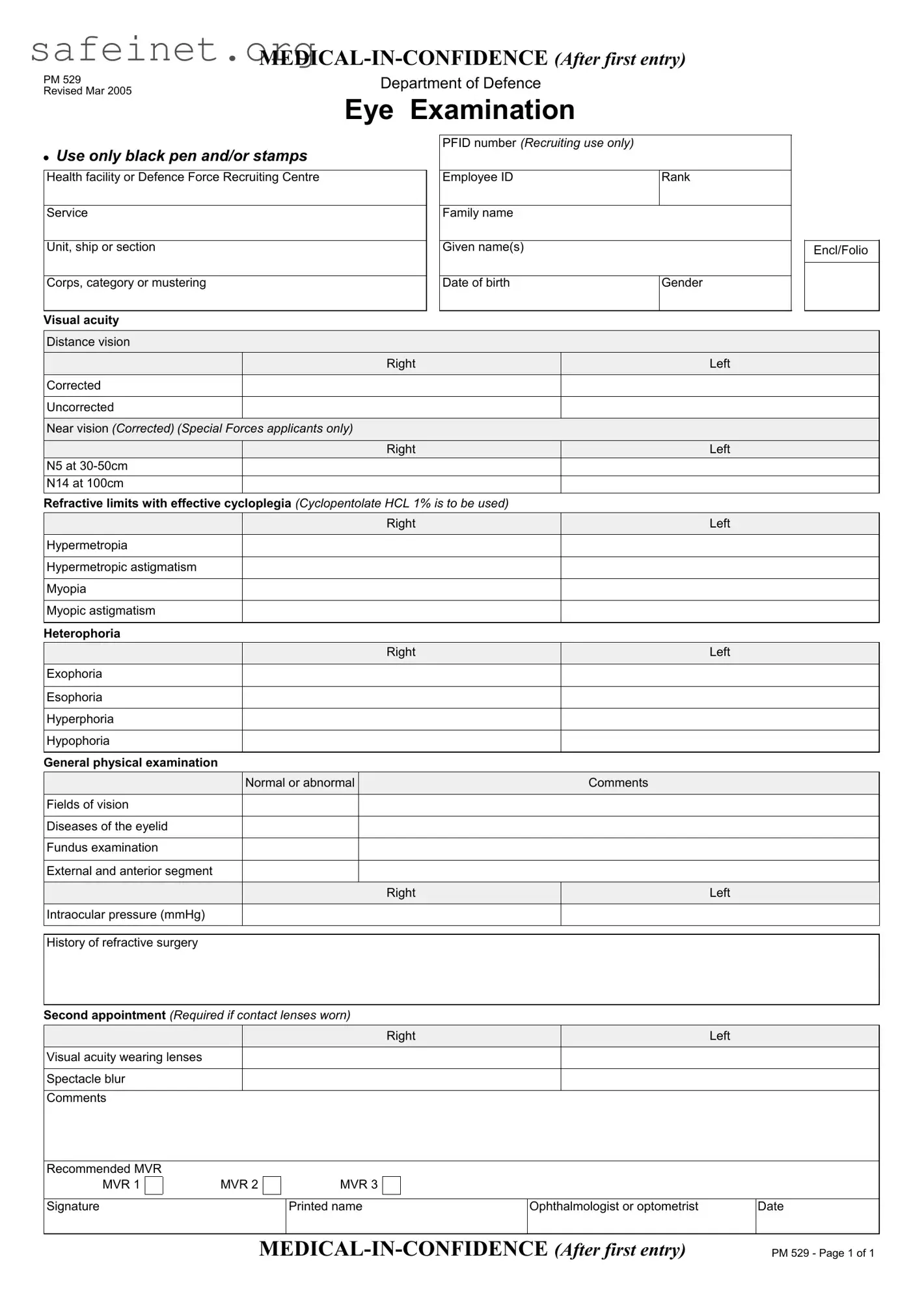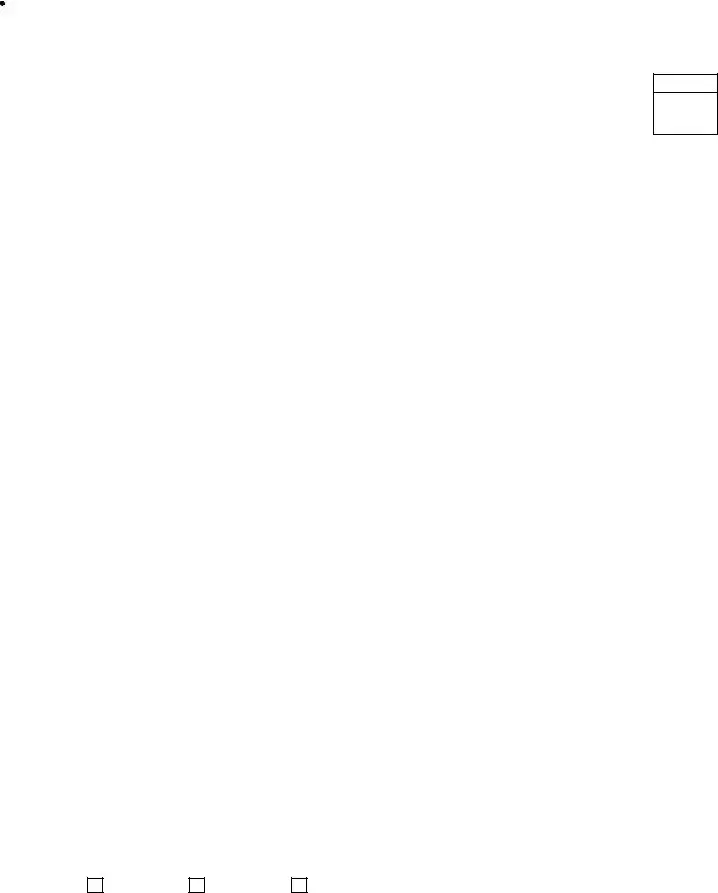What is the purpose of the Eye Examination form?
The Eye Examination form is designed to assess the visual health of individuals, particularly recruits and members of the Defence Force. By gathering comprehensive information about visual acuity and ocular health, the form helps healthcare providers identify any potential issues that may affect a person's ability to perform their duties effectively.
Who should fill out the Eye Examination form?
This form is typically filled out by individuals undergoing an eye examination as part of the recruitment process or medical evaluations within the Defence Force. It can also be completed by those seeking to return to service after a period of absence due to health issues.
What personal information is required on the form?
Applicants must provide personal details such as their rank, service unit or section, full name, date of birth, gender, and employee ID. This information helps to ensure accurate record-keeping and simplifies the identification of individuals during subsequent appointments or evaluations.
What measurements are included in the visual acuity section?
The visual acuity section captures both distance and near vision measurements for each eye. It evaluates corrected and uncorrected vision, ensuring a comprehensive understanding of the applicant's visual capabilities. For Special Forces applicants, specific near vision assessments are also conducted at predetermined distances.
What does the refractive limits section entail?
This section indicates the refractive errors detected during the examination, such as hypermetropia (farsightedness), myopia (nearsightedness), and various types of astigmatism. These measurements are crucial in developing the appropriate corrective lenses if needed, and cyclopentolate HCL 1% is used to achieve accurate readings.
What kind of additional information can be found in the general physical examination section?
The general physical examination section covers the overall health status of the eye and surrounding structures. Providers will note any abnormalities, the condition of the eyelids, and results from further examinations like the fundus exam and fields of vision tests, which contribute to a full assessment of ocular health.
What should be done if contact lenses are worn?
If an applicant wears contact lenses, a second appointment is required for a thorough examination while the lenses are being worn. This ensures that visual acuity is accurately measured and any necessary adjustments to lens prescriptions can be made. Comments on visual acuity while wearing lenses will be documented to assess performance.
Who signs the Eye Examination form?
An ophthalmologist or optometrist must sign the form upon completion of the examination. This signature confirms that the eye health assessment has been thoroughly conducted and that the information reflects the professional's clinical findings.
How is sensitive information handled on the Eye Examination form?
The Eye Examination form includes a prominent confidentiality notice, indicating that the information is to be treated with the utmost discretion. This ensures that personal health information is protected in compliance with medical confidentiality guidelines and appropriate data handling practices.
Where can I get assistance if I have questions about the form?
If there are questions or concerns regarding the Eye Examination form, assistance can be obtained through the health facility or Defence Force Recruiting Centre. Staff members there can provide guidance on how to complete the form accurately and address any related inquiries.

